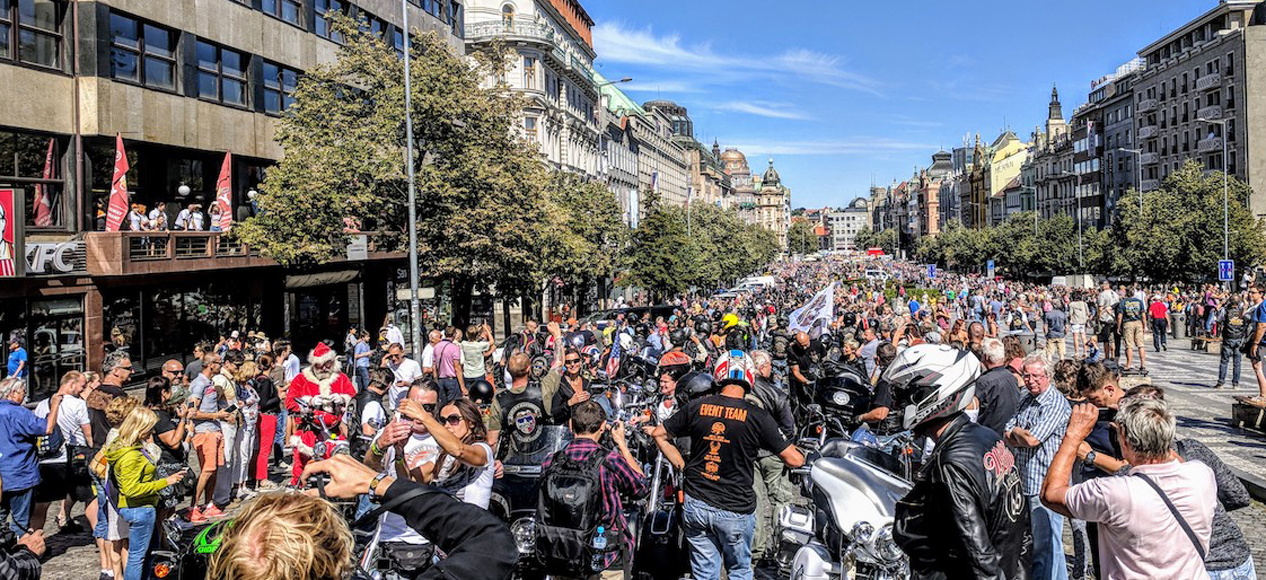Just why are Harley-Davidsons so popular, and what is it that makes this all-American brand seemingly stand apart from the rest of the motorcycling pack? Insidebikes sent Chris Cope to a HOG Rally in Prague to find out…
Harley-Davidson’s been getting a lot of press lately. When it recently announced plans to produce bikes in segments outside of anything we’ve known from the 115-year-old company, it got a lot of people talking. Many of those people felt this was a move driven by panic caused by nearly three years of dwindling sales (mostly in the United States).
These challenging times are relative though. Harley-Davidson still sells more bikes in a single financial quarter than Triumph or Ducati in a full year. There are a lot of people riding Harleys out there, and what’s interesting to me is how thoroughly – almost religiously – dedicated they are to the brand.
Earlier this summer, I got a chance to be among the roughly 100,000 people who turned up in Prague to help celebrate Harley-Davidson’s 115th anniversary. Day and night, the old city shook with the sound of planet-size V-twins. And, as best I could tell, residents were happy to have them there. When I was riding out of the city at the end of the weekend, a woman ran into the street and hugged me. Others cheered and waved as I rode past.
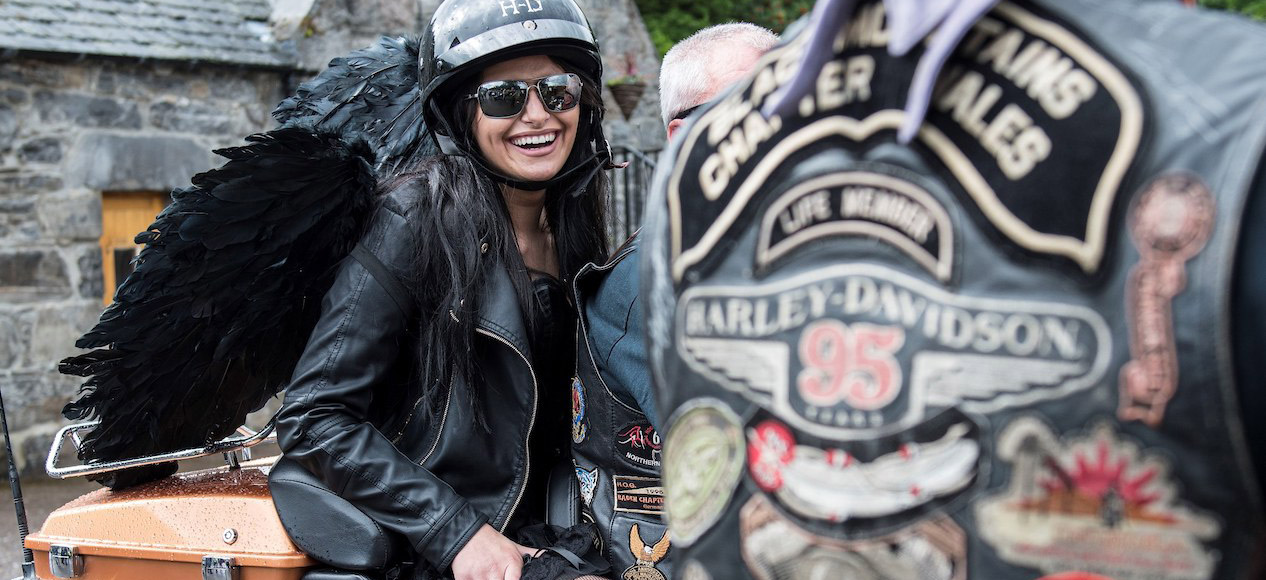
I wasn’t fazed; I’ve seen this sort of thing before. I’m from the United States originally – born and raised in Texas, where most people either own a pickup truck or a Harley, usually both. (Gun ownership is non-negotiable, by the way, which is why I live over here now). Every weekend of the riding season, in every corner of the United States, you will find events similar to those held in Prague. And for many, a turnout of 100,000 would be a poor showing.
Sturgis, the mother of all rallies, has been known to draw as many as 750,000 riders. That’s the whole of Edinburgh and Southampton packing up and heading to a town so middle-of-nowhere it is still 400 miles away from any American city you’ve actually heard of (unless you’ve not heard of Denver, in which case it’s further).
Ostensibly, most of these ginormous rallies are not brand specific – they’re open to any rider on any kind of bike – but if you were to visit one you could be forgiven for thinking it a “Harley-only” do. And if you were to attend such a rally – as I have once or twice – one word might come to your mind: “Why?”
Why does the Harley-Davidson brand attract so dedicated a following? Sure, motorcycles in and of themselves inspire an obsessive love, and I know people who are die-hard fans of Ducati or Triumph or BMW and so on, but nothing touches on the borderline religious fervour with which millions upon millions of riders view the orange and black. What makes Harley so special? Riding back from Prague (on a Street Bob), these questions spun in my mind. I’ll admit I never hit a definitive, magic-bullet conclusion, but here are some of the answers I came up with:
Right place, right time?
There are a number of factors playing into the success of the brand, but even in those aspects fortune seems to have been on its side. What they have done is be intelligent in capitalizing on their luck – more often than not through clever advertising slogans and branding. When Harley recently announced a bevy of forthcoming models you might have missed the news that it also plans to boost profit via “Broader Access” – a phrase that, as best I can work out, translates to: “Selling more T-shirts.”
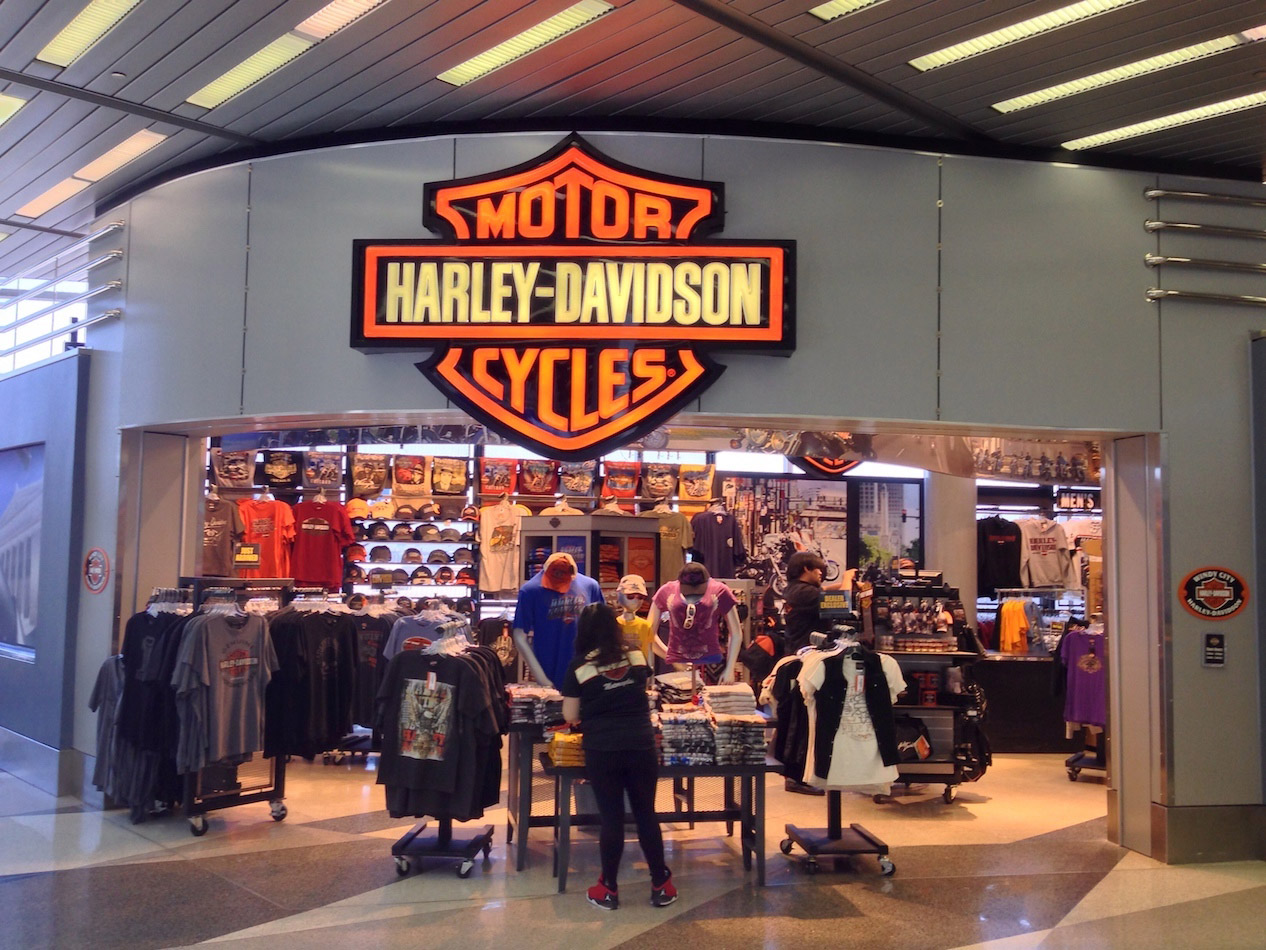
In the United States, the company already has retail outlets in a number of shopping centres. It plans to set up more of these, selling not bikes, or even gear, but T-shirts, shoes, wallets, bed sheets, teddy bears an so on – all tagged with the famous bar-and-shield logo. Harley’s penchant for offering a branded version of literally everything (I would be surprised if there are not Harley feminine hygiene products) gets under the skin of many motorcyclists, but you have to admit it’s a good strategy.
Harley has learned that many people come to its brand before they come to its bikes. It realises that not every person wrapping him or herself in a Harley blanket on cold winter evenings is a motorcyclist, but that by making itself omnipresent the brand is able to convey a message to would-be motorcyclists that Harley-Davidson is one of the most important brands. Maybe the most important. Certainly that was the way things felt when I was growing up in Texas.
Longevity
All this good luck takes time to build. Triumph and Indian may claim longer histories but, with the possible exception of Royal Enfield, no motorcycle company has been in constant production longer than Harley-Davidson. And it’s the simple case that things that have been around a long time have a tendency to inspire loyalty. Similar to the way in which a brand’s omnipresence gives it an air of importance, so does longevity.
In addition to tapping into the human tendency to trust or elevate things that are old, Harley’s longevity means that its fan clubs have had much longer to entrench themselves into various motorcycling scenes. The reason Harley chose to hold one of its birthday celebrations in Prague (there’s another being held in Milwaukee) was the fact that city is home to the oldest existing Harley rider club in the world; Harley-Davidson Club Praha was founded in 1928. Over the past 90 years it’s outlasted Nazi occupation, communist repression, and countless coup d’etats; it’s not hard to see why members of the club hold it so dear.
But even in Wichita, Kansas, where the members of PrairieThunder Harley Owners Group probably couldn’t even pronounce the name Gustáv Husák, let alone expound upon the former Czech leader’s “reluctant terror” policies of the ‘70s and ‘80s, a riders group – especially a long-standing riders group – helps to reinforce the “importance” of a brand. Because Harley-Davidson has been around the longest, its groups have had the most time to root into motorcycling scenes and communities.
Belonging
If you’ve ever participated in organised sport, or even worn the jersey of a professional team while attending one of its matches, you can relate to the feeling of looking out across a space and seeing a bunch of people similarly kitted as yourself – the feeling of thinking: “Yeah, these are my people. Look at all of us!”
This is the sort of thing people in riders groups feel: the comfort and empowerment of being in a group. Thanks in part to its aforementioned corporate cleverness Harley-Davidson has thousands of Harley Owners Group (HOG) chapters around the world.
These groups extend back to that wild and distant time before the interwebs, when finding people to hang out with was more difficult than swiping right. HOG chapters offer to their members a feeling of belonging, camaraderie, confidence, and identity. And, in turn, they give to the brand a strong sense of loyalty. HOG members spend upward of 30 percent more on their bikes, gear, and branded goods than other Harley-Davidson owners.
The Whole America Thing
While the “brand” of the United States of America has taken something of a knock lately, it wasn’t too long ago that Americana had high value. It still does in some places. Certainly in the United States itself flag waving hasn’t gone out of style, but even beyond US borders there remains a great deal of affection for American things and American style.
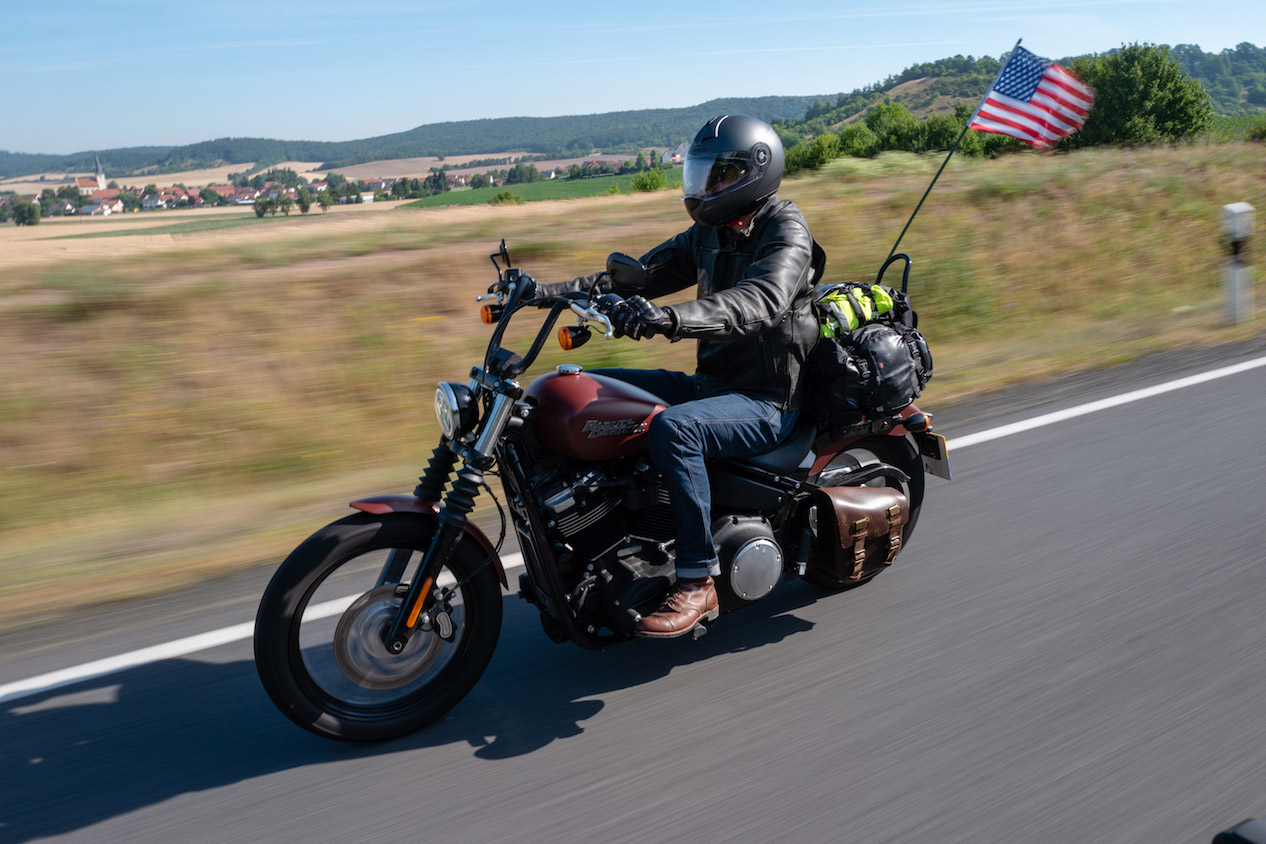
Meanwhile, the Harley-Davidson brand is so intrinsically linked with America that when the EU recently sought to punish the United States via trade tariffs, it made sure to include heavy motorcycles. Harley is right up there with McDonalds and Coca-Cola as one of the great pillars of American culture.
For those people still admiring and emulating the American ethos (if not its politics), Harley-Davidson is the creme de la creme. As is always the observation when Triumph or a Japanese brand attempts a cruiser: if you want a bike that’s like a Harley, why on earth would you get anything other than a Harley?
The Whole Outlaw Thing
One aspect of American culture that seems to capture people’s imaginations is its criminal element. That’s always been the way. Many of America’s folk heroes – whether it’s Billy the Kid, John Dillinger, or “White Boy” Rick Wershe – have been bold individuals of dubious moral character.
Since the mid-60s, motorcycle clubs, specifically those known as “one-percenter” clubs (so named for a claim falsely attributed to the American Motorcyclist Association that 99 percent of motorcyclists are law-abiding), have served as modern-day cowboy heroes in the minds of many. They’re mythologized as being free-to-roam outlaws, unburdened by social mores but adhering proudly to a code of loyalty and self-reliance. That mythology – though almost universally false in reality – has an immensely strong appeal. Britons will relate to this, of course, because the Rocker movement ran parallel to the rise of the “outlaw” MC mythology.
Harleys are linked with that mythology in part because the company has chosen to be (my favourite cringe-worthy advert features Kid Rock snarling: “I can’t hear you over the rumble of my freedom”) and in part because the brand has long been the de facto vehicle for American one-percenter motorcycle clubs.
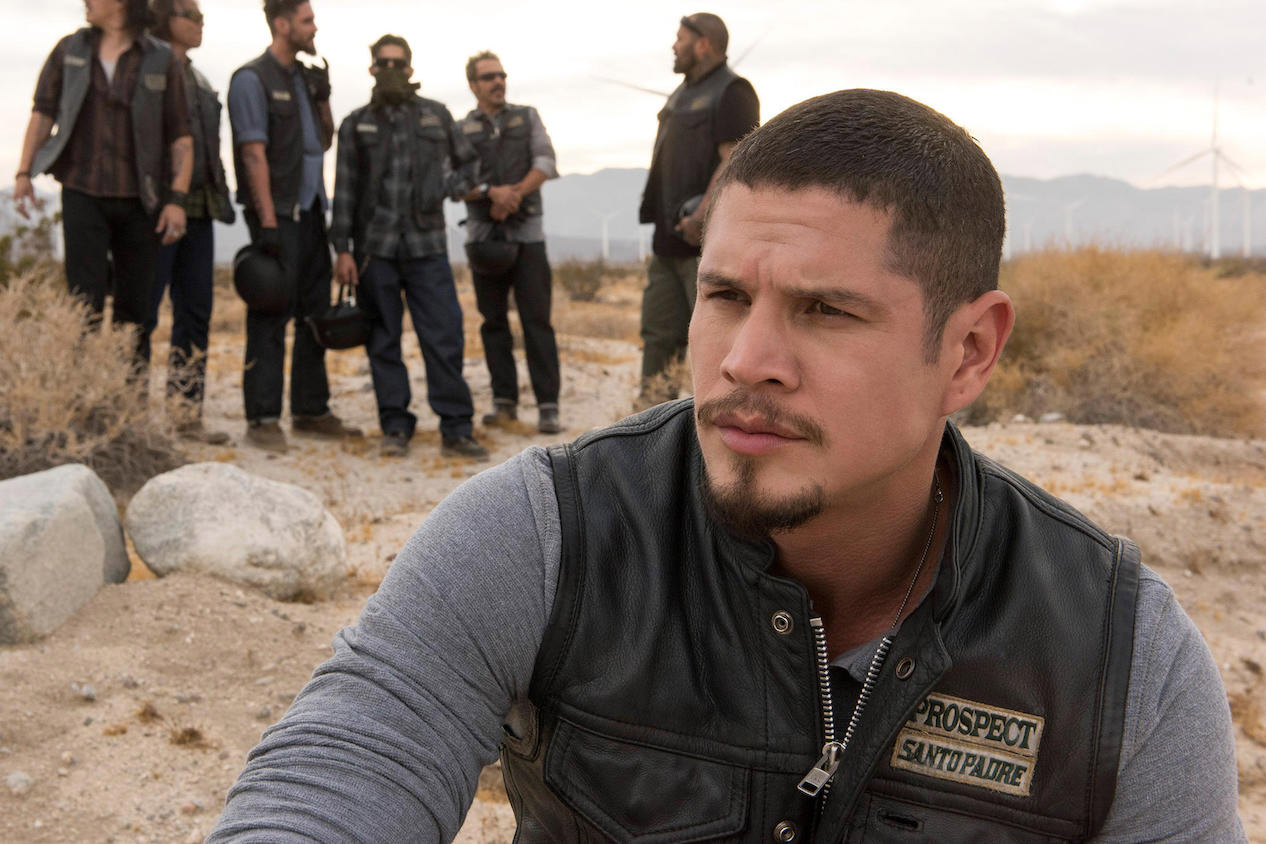
Historically, outlaw MCs were made up of jaded veterans unwilling to return fully to the normalcy of society. And although they didn’t want to adhere to every social rule, they tended to be deeply patriotic – often nationalistic. Clubs like the Boozefighters and Hells Angels got their start in the late 1940s, but the movement’s boom was in the 60s and 70s (that’s when famous groups like the Diablos, Bandidos, Warlocks, and Mongols were formed). At that time, there was really only one American motorcycle brand to choose from. By the time Victory came along in the ‘90s most clubs had already written the necessity of a Harley-Davidson into their by-laws.
Escapism
You will notice that the archetypal one-percenter look – leather or denim vest (aka “kutte”) festooned with patches, jeans, wallet chain, heavy combat or work boots – is a style that’s been adopted by a lot of cruiser enthusiasts. Harley-riding cruiser enthusiasts in particular.
It’s not a coincidence that most HOG chapters have patches that even mimic the multi-part nature of one-percenter patches – for example, a large patch identifying the organization, an additional patch identifying chapter location, and often yet another patch identifying the individual’s role within the organization. They’d no doubt use different terminology to explain why they do this but effectively these HOG members are playing dress up. Perhaps it’s fair to describe hardcore Harley enthusiasts as the original LARPers.
Like those folks who dress up as knights and hit each other with foam swords, perhaps many of Harley’s most dedicated fans see their bikes as part of a costume that allows them to feel like a different person for a while. Critics of the brand will often snidely suggest that its customers are, in fact, just a bunch of accountants and dentists. Very, very broadly, I think that may be true. The question you have to answer for yourself, though, is whether that’s actually a bad thing.
When people dress up for ComicCon, do we insult them for not actually having superpowers? When a bunch of blokes set up medieval-style tents on a National Trust property, do we berate them for not actually having dysentery? In light of the fact that all motorcyclists have to get dressed up in silly outfits (You do not look as cool in a leather one-piece as you might think, grandad), is it really all that awful that the silly outfit of choice for some riders models the false mythology of outlaw MCs?
I’m not sure. But certainly the above reasons contribute to the Harley-Davidson brand meaning a whole lot to people. A fanbase that dedicated is something any manufacturer would love, and it will serve as a hell of a resource as Harley seeks to take on new challenges in new genres. Despite current sales woes it’s hard to imagine the company won’t be able to turn things around – it is a brand that simply means too much to too many people to ever really fail.


